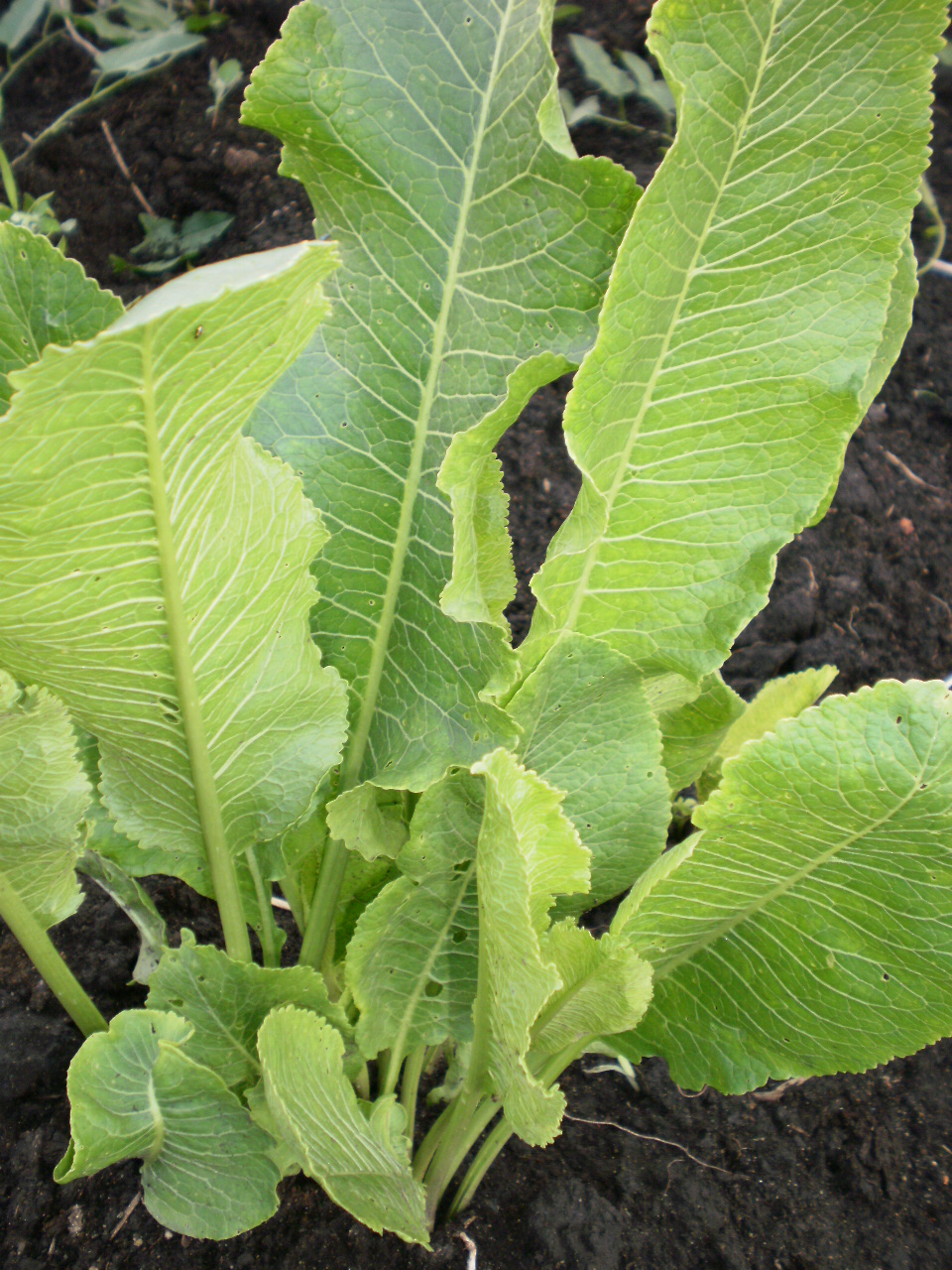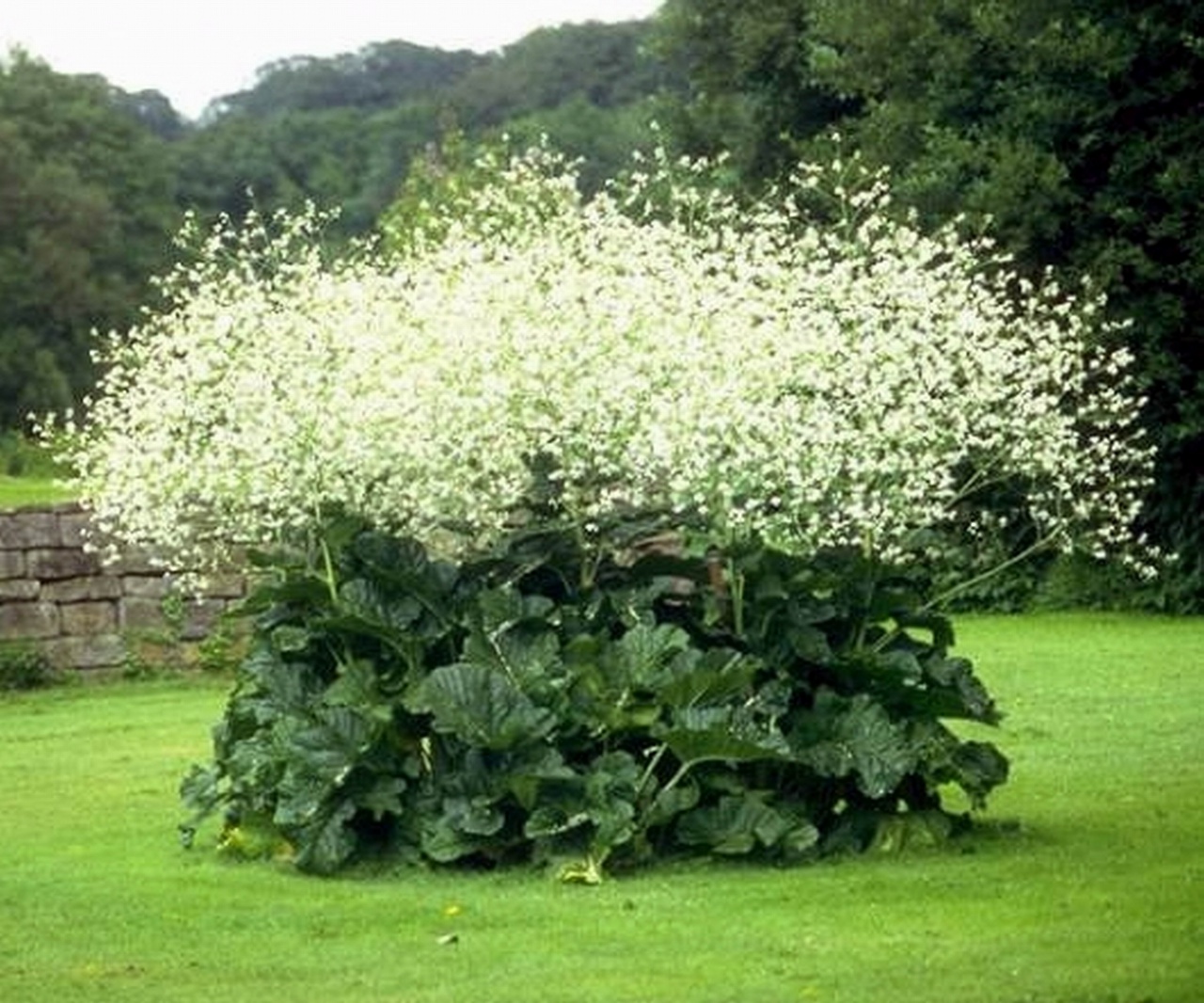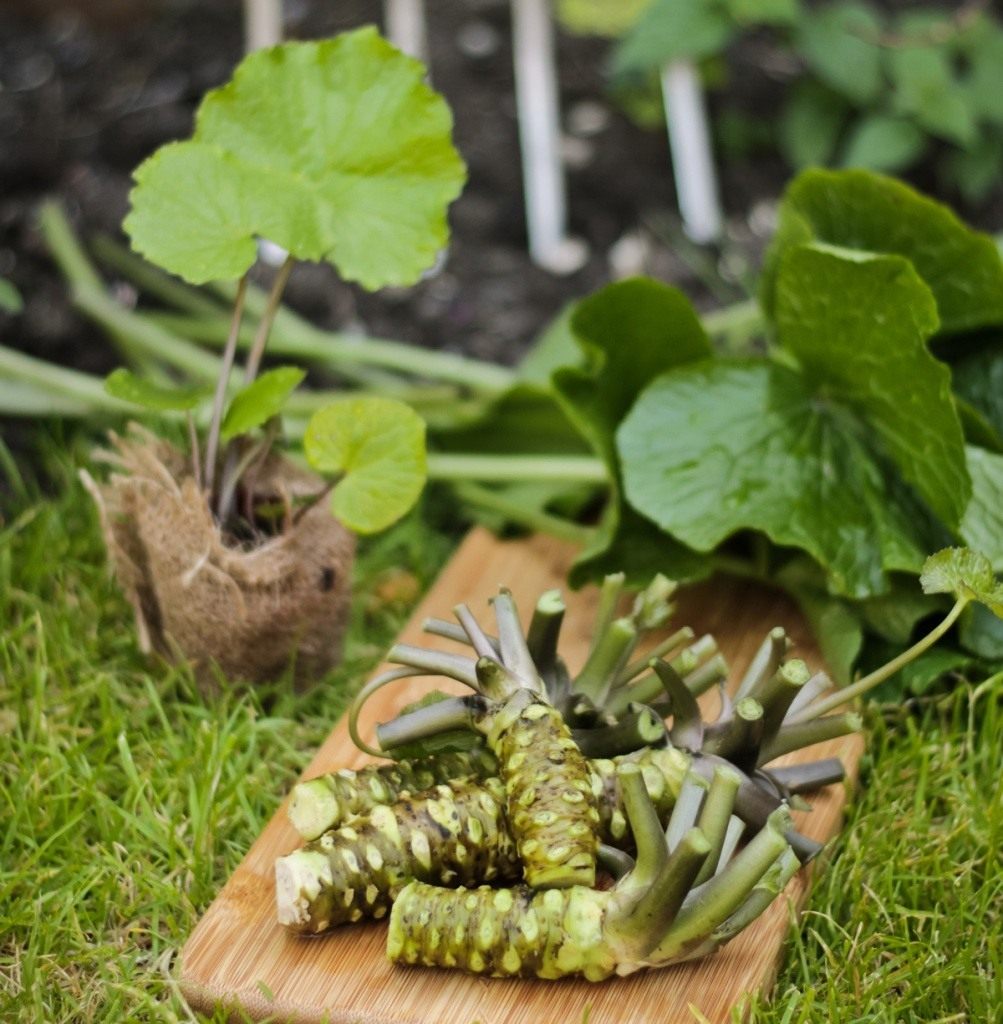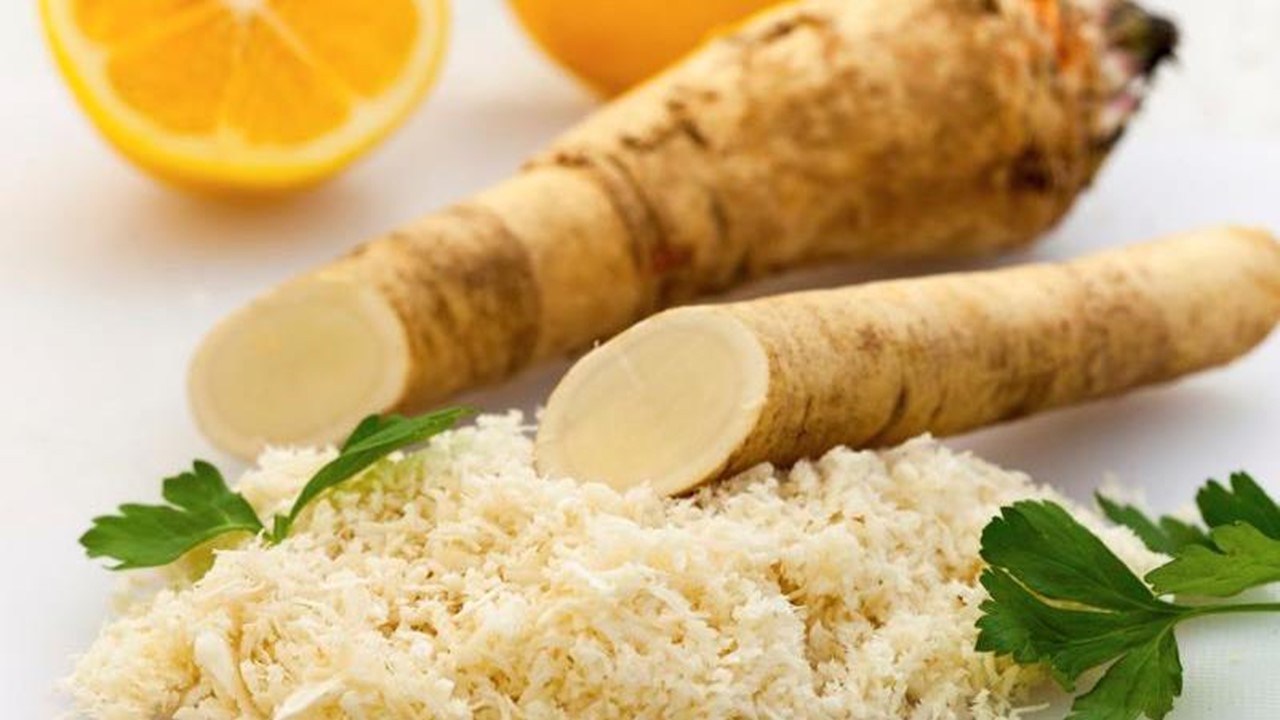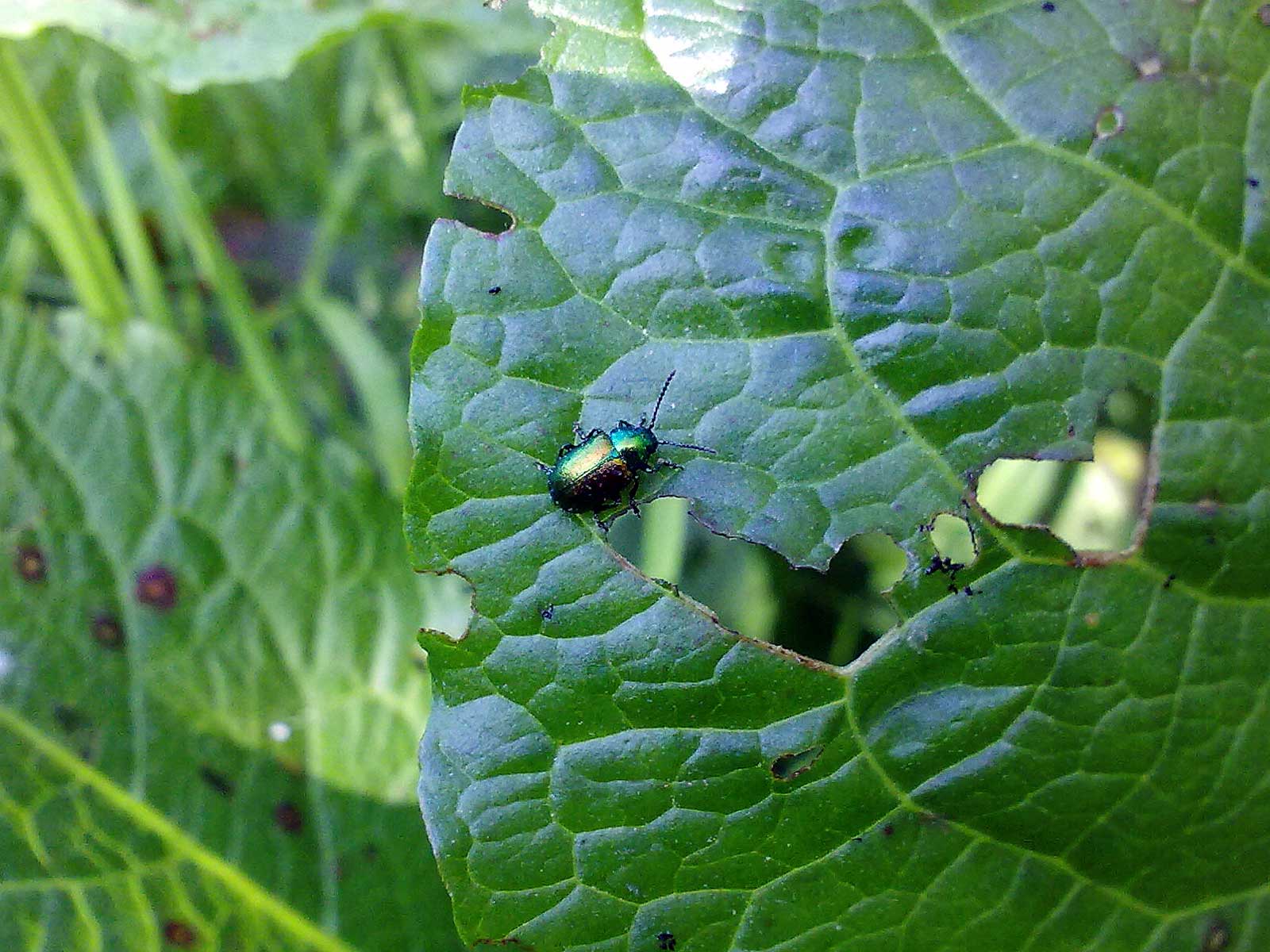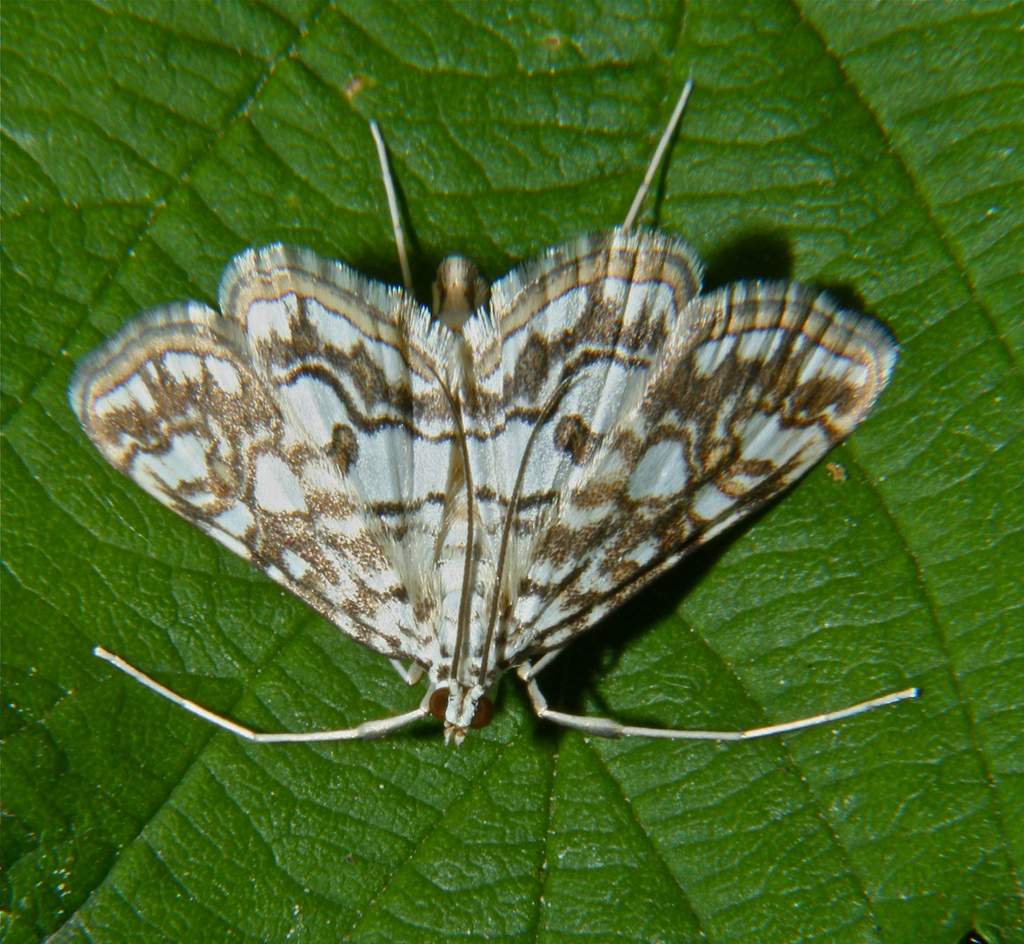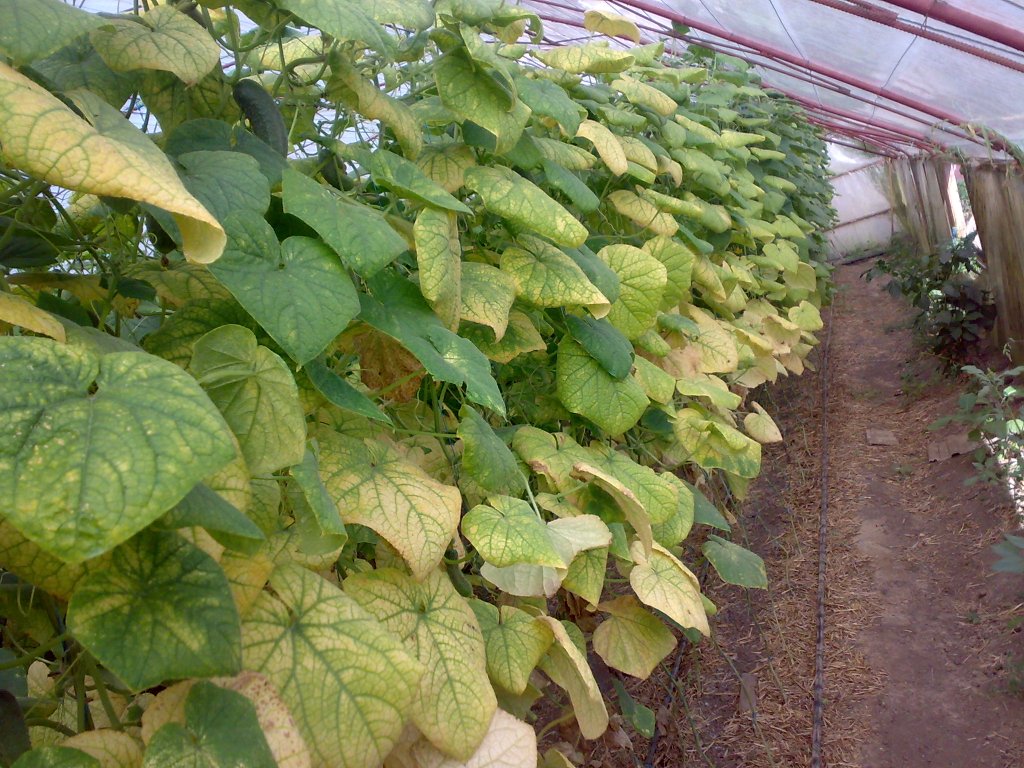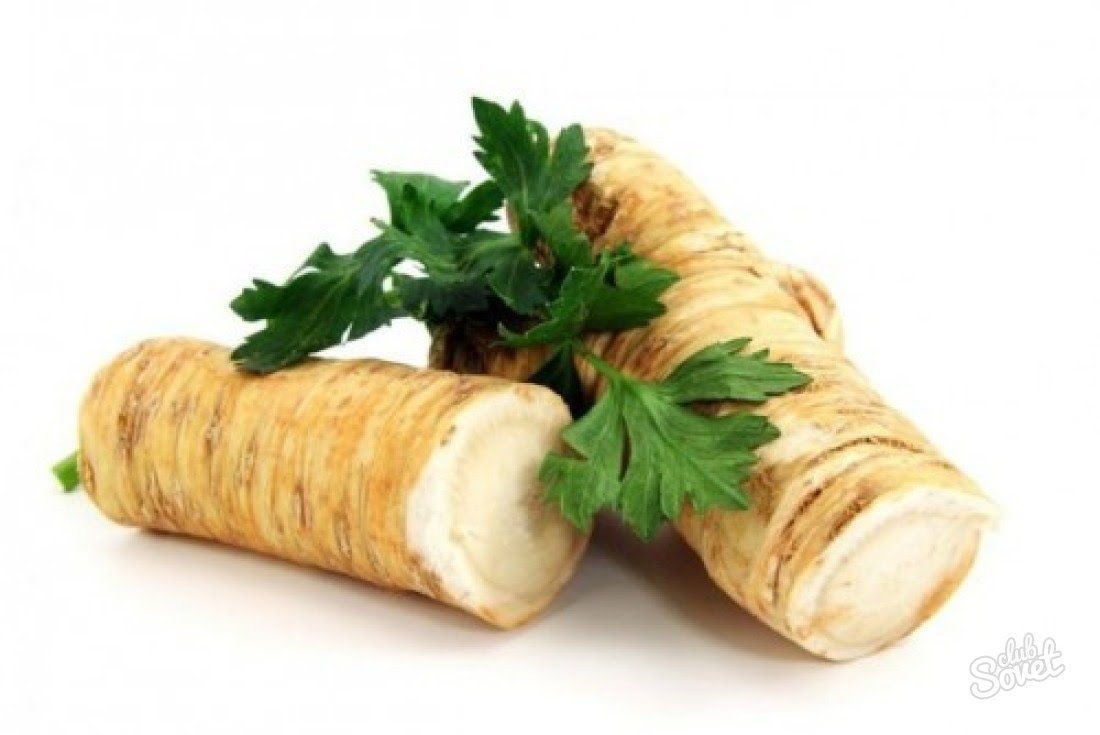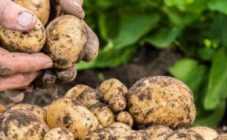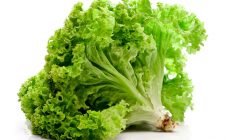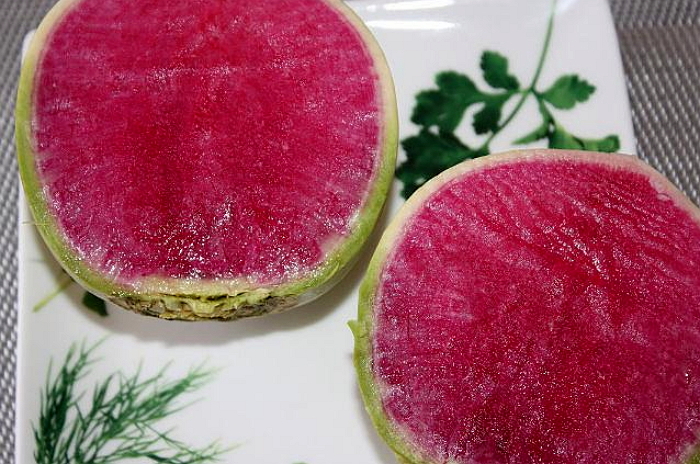Content:
Horseradish is a vegetable that is highly popular among gardeners in our country. Probably, you cannot find a garden plot on which this culture does not grow.
Description
In fact, horseradish is a perennial herb belonging to the brassicaceae vegetable family. The culture has a taproot, highly branching and fleshy. There are many dormant buds along its length. In the first year after horseradish cultivation has begun (provided that it is planted by cuttings), the plant forms a rosette, which consists of at least six leaves.
The leaves themselves are petiolate, rather large, have an oblong (sometimes slightly oval) shape and a fibrous edge. Their length can be up to 1 meter with a width of up to 25 cm. In the second year of growing season, horseradish forms an erect stem on which flowers are formed. Its height can reach one and a half meters. The flowers of the culture are white, rather small, collected in racemose inflorescences. They are distinguished by a particularly pleasant aroma.
Horseradish vegetable root crop is a very frost-resistant and moisture-loving culture. She prefers sunny and open areas.
Horseradish as a vegetable is not whimsical at all to the soil. Provided with adequate care, it will yield excellent yields, regardless of the soil. The culture responds well to fertilization: organic or mineral.
Horseradish is cultivated on an industrial scale as one, or a two-year crop in fields outside the crop rotation.
The plant can also be found in the wild. Its natural area is almost all of Europe, with the exception of the Arctic zones. It can usually be found in humid places. For example, on river banks or near lakes. In Russia, two varieties of horseradish grow: horseradish and meadow horseradish. The latter is mainly found in Siberia.
Varieties
Before asking questions about what to do if horseradish suddenly bloomed, or what is better to plant next to horseradish, you should familiarize yourself with the varieties of this culture common among domestic gardeners.
Katran
Katran is a horseradish variety - a very unpretentious culture. Differs in high yield and resistance to low temperatures. You can eat not only its roots, but also the leaves. In the first year of cultivation, the root crop is quite thin, and in the second, its weight can reach one kilogram. The leaves are large, light. This variety blooms with fragrant white flowers. One of the popular varieties of Katran is Accord. It is often planted on their plots by domestic gardeners and gardeners.
Wasabi
Wasabi is a Japanese horseradish, but it is well known in Russia due to the popularity of Japanese cuisine. In general, wasabi is no different from other crop varieties, except that it has a characteristic green color.
In regions with frequent temperature changes, horseradish of this variety is recommended to be grown in greenhouse conditions, otherwise the crop may die. When growing the variety in the open field, it is recommended to place a garden bed in close proximity to a reservoir or a small waterfall. The spray will create optimal moisture for the crop.If there is no such possibility, the humidity of both air and soil will need to be monitored with particular care.
Wasabi requires sulfur to grow and develop normally. Mustard, which is made from wasabi horseradish and served with rolls and sushi, is familiar to most of our compatriots.
Atlant
You can't be a gardener and not know the Atlant horseradish variety. This is the most common type of culture in our country. Despite the fact that this variety was bred by breeding methods, it is excellent for growing in the middle lane. Atlant belongs to mid-season varieties, is quite resistant to temperature extremes and lack of watering. The flower of this horseradish is white and very fragrant. The root is even, milky white, with dense pulp, perfectly stored in winter. You can plant in any soil.
Useful properties and contraindications
To appreciate what horseradish is, it is completely not enough to know what kind of horseradish belongs to, how and when horseradish blooms, how to cultivate it correctly and when to dig. There are many useful properties for which the national vegetable deserves to be called a panacea for many diseases.
The culture tastes quite spicy, with a rich and piquant aroma. Both the head (root) of the plant and the foliage can have a positive effect on health.
In addition to fiber, the root contains vitamins of groups B, C, E and PP, many minerals, steroids, phytoncides, and also nitrogenous substances.
Horseradish is used in cooking, folk medicine and cosmetology.
If you regularly eat dishes that include horseradish (root or herb) in the recipe, then its benefits will spread in various directions:
- effective destruction of pathogenic bacteria and viruses;
- improved sputum discharge;
- treatment of indigestion and gastritis;
- relief from respiratory diseases;
- part of therapy in the treatment of hepatitis, accompanied by inflammation of the biliary tract;
- relief from arthritis of the knee joints, radiculitis and rheumatism;
- restoration of the menstrual cycle in women;
- increased potency in men;
- getting rid of pigmentation on the skin;
- healing of purulent wounds;
- fight against migraines and neuralgias;
- restoration of the liver in cirrhosis.
Most often, horseradish is used to prepare winter preparations. Any recipe book or culinary site contains many ways to prepare horseradish, among which there is sure to be an option that will interest you.
Of course, it cannot be argued that horseradish is able to cure any disease, but it cannot be denied that the scope of its use is quite diverse. The only condition that should be remembered is that in most cases horseradish is only part of the therapeutic treatment and cannot fully replace the intake of medications, if any were prescribed by the attending physician.
Plant resins help to tighten the skin and get rid of fine lines and wrinkles. For skin care, grated root gruel is usually used. She needs to treat her face like any other mask. If the procedures are performed regularly, over time, the picture you see in the mirror will change significantly towards improvement.
Horseradish is an excellent partner in hair care. A mask with its use enhances hair growth and makes hair follicles stronger and healthier.
No matter how useful in all respects a horseradish vegetable is, one should not forget that in some cases it can harm the body.
Doctors strongly advise against eating horseradish and dishes in the preparation of which this vegetable was used in the following cases:
- acute intestinal disorders;
- pregnancy;
- lactation period;
- colitis;
- excess hydrochloric acid;
- individual intolerance to the product;
- high blood pressure.
People with gastric pathologies should eat horseradish with great care, even if they are in remission.
Pests and diseases
If you do not take care of the plant, then the question of whether the horseradish should start digging out may not arise. Practice shows that culture is considered useful not only by people, but also by harmful insects. There are also some diseases that can significantly slow down the usually rapid growth of horseradish. Let's consider the most serious problems that can arise in the process of cultivating a crop.
Babanukha
Babanukha is a dark green insect that especially likes horseradish foliage. The bug can be found in June, when it comes out of hibernation and begins to actively seek food. The eggs of the female insects are laid directly in the eaten leaves. If holes are found in the plant, it is strongly recommended to remove the affected tops. If the defeat is massive, deep digging of the soil will be required, followed by careful treatment with an insecticide. In case of minor damage, the pest can be collected by hand or using glue traps.
Wavy flea
Another unpleasant pest that can cause damage to a plant, very similar to a babanukha (also gnaws at leaves) is a wavy flea. It is a very small bug, barely 3 mm in size. The flea beetle is black with yellow stripes on the elytra. The harmful insect becomes active as soon as spring comes. Wavy flea females lay their eggs on the soil surface. Over time, damaged horseradish leaves dry out, and the culture itself dies. As a prophylaxis against insect damage, the weed and dry leaves should be carefully removed in the fall, as well as the soil should be dug up. To combat the parasite, formulations such as Actellik or Foxim are effective. During the growing season, they should be used three times: after the emergence of sprouts; when buds appear; at the end of flowering.
Cabbage moth
The cabbage moth is a guest parasite. As the name suggests, the insect prefers cabbage, but in its absence it may well become interested in horseradish. It is a small moth with a wingspan of 3 centimeters. Its body is brown, and there are small dark stripes on its front wings. The horseradish insect strikes at the caterpillar stage - it feeds on the leaves of the culture. For about a month, future butterflies gnaw at the foliage, after which they go into the ground for pupation and wintering.
Preventing these pests is no different from wavy flea prevention. For extensive damage, insecticides may also be helpful.
Ascochitosis
The main symptom of ascochitis is the appearance of yellow-brown spots on the leaves. In the infected areas, the mycelium grows, in which the fungus, which is the causative agent of the disease, hibernates later. Most often, the disease occurs if horseradish grows in an excessively humid environment. To prevent the development of ascochitosis, it is important to observe crop rotation and plowing of the garden. The affected leaves must be removed. The remaining plants should be treated with 1% Bordeaux mixture.
White rot
White rot is dangerous enough for horseradish. This is an infectious pathology that affects not only foliage, but also root crops. They are affected by the white mycelium. The disease develops with excess moisture in the root crop growing area.For prevention, you should not flood the plant with water, over-fertilize with nitrogen compounds and plant the plant too densely. In case of mass defeat, treatment with copper-containing fungicides is recommended.
Verticillary wilting
The most dangerous disease that can infect horseradish is verticillary wilting. With it, the fungal pathogen penetrates directly into the vascular system of the culture. First of all, it affects the lower leaves. As a result, the horseradish will die very soon. If you suspect a disease, the beds should be carefully examined at least once a week. All diseased shoots must be immediately removed along with a lump of soil and root system. Verticillium wilting is not subject to treatment - only the prevention of spread is effective.
